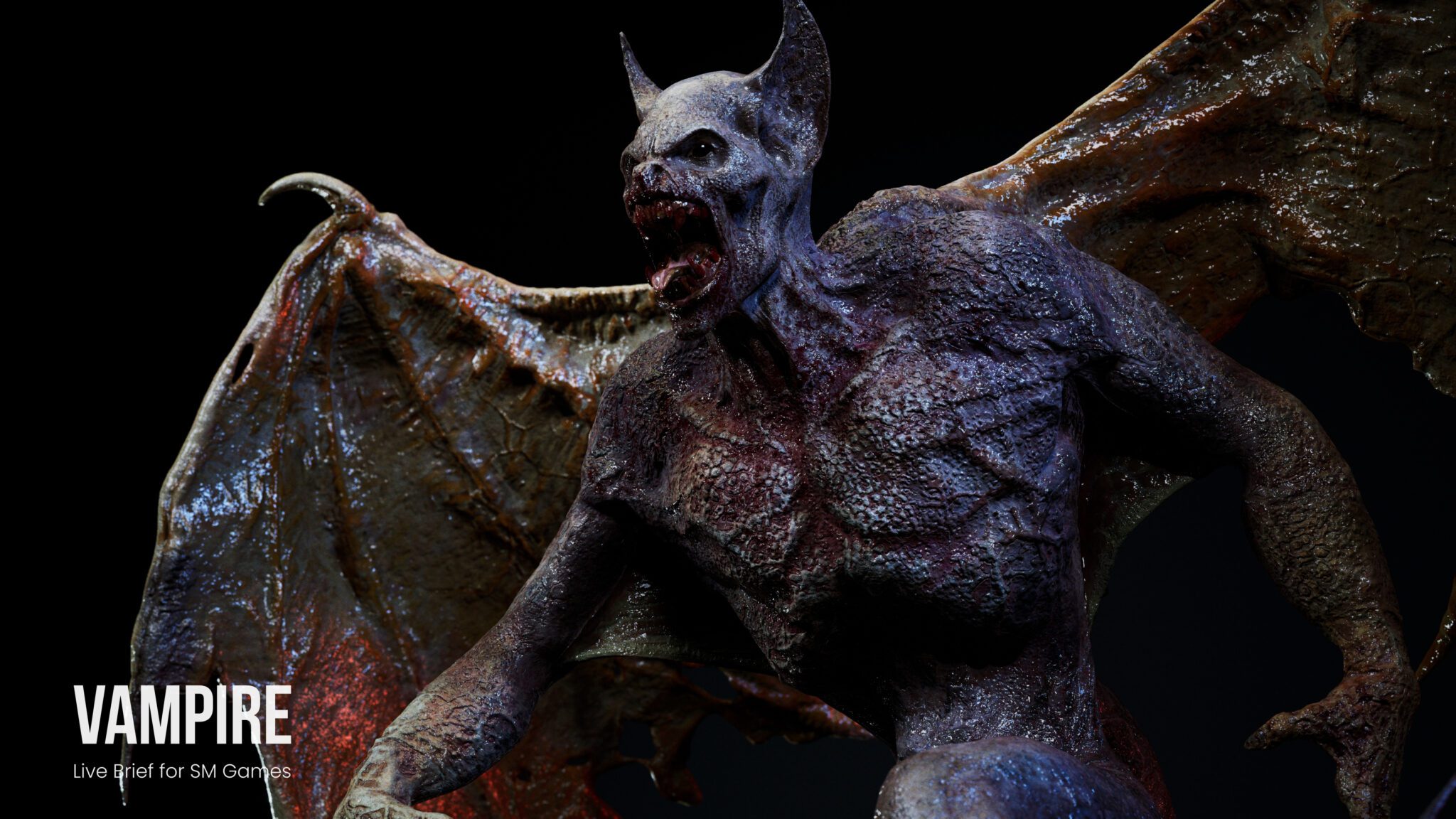
VAMPIRE
Reflection on the 3D Character Model Creation Process
Creating a 3D character model is a complex and rewarding process that involves multiple stages and requires a combination of artistic vision, technical skills, and attention to detail. Throughout the journey of creating the vampire creature model, I experienced various challenges and made critical decisions that shaped the final outcome. Reflecting on this process, I am proud of the results achieved and the lessons learned along the way.
The initial concept for the character evolved as I explored different ideas and references. While the initial plan was to create a creature inspired by Vecna from Stranger Things, I eventually settled on a vampire creature concept. This decision allowed me to focus my research and reference collection, giving me a clear direction for the model.
The modelling stage was a significant part of the process, where I sculpted the primary shapes and refined the details using ZBrush. Separating the model into polygroups aided in the organization and ease of later stages. Additionally, choosing TopoGun for retopology proved to be a wise decision as it allowed for the quick and efficient creation of a clean and optimized mesh.
The texturing stage brought the model to life, and using tools like Marmoset and Substance Painter, I was able to apply realistic textures and materials to different parts of the vampire creature. The use of ID maps and polygroups simplified the process and improved the workflow.
The lighting and rendering stage, performed in Unreal Engine, allowed me to create a captivating atmosphere for the vampire creature. Utilizing a Pro Light Kit and fine-tuning the lighting setup enhanced the character’s features and provided a studio-like environment. The final renders and video sequence showcased the model from different angles, capturing its essence and bringing it to life.
Throughout this process, I learned the importance of planning, flexibility, and using the right tools for the job. Adapting the concept, utilizing efficient software, and making informed decisions at each stage contributed to the success of the project. Additionally, attention to detail, such as polygroup organization and UV unwrapping, proved crucial in achieving a polished result.
Collaboration and feedback were also valuable aspects of the process. Seeking input from peers, mentors, or fellow artists can provide fresh perspectives and help identify areas for improvement. Constructive criticism and iterative refinement are essential in the pursuit of creating high-quality 3D character models.
Conclusion
In conclusion, the creation of the vampire creature model was a challenging and rewarding journey. The process involved concept development, sculpting, retopology, texturing, lighting, and rendering, utilizing various software tools and techniques. Each stage presented its own set of challenges and opportunities for growth. Through careful planning, skilful execution, and a passion for the craft, I was able to bring the vampire creature to life, creating a visually captivating and immersive 3D character model.





